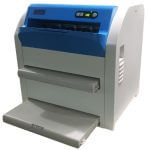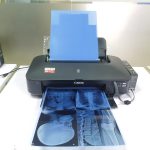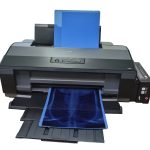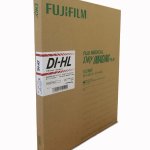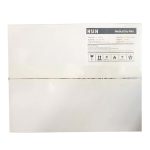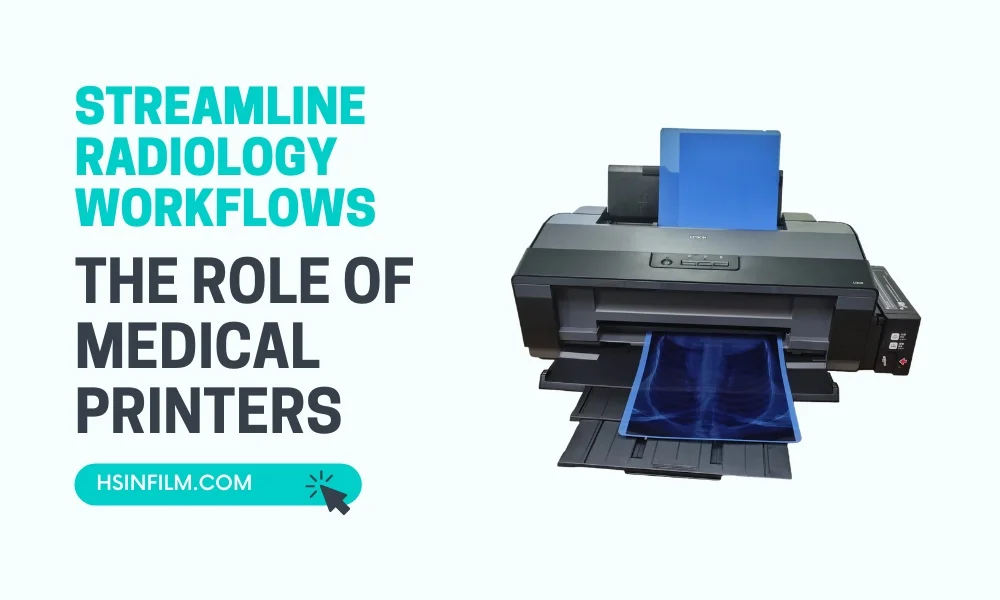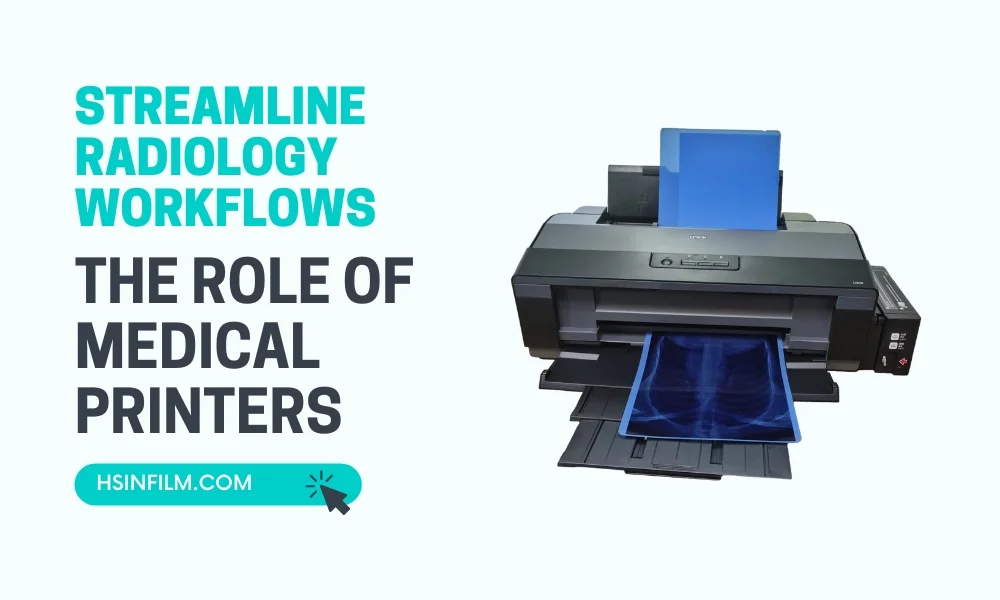Breast cancer is a significant global health concern, affecting millions of women every year. Early detection remains the key to successful treatment and improved patient outcomes. In this critical endeavor, mammography plays an indispensable role. It is a widely recognized and proven method for detecting breast cancer in its early stages, often before physical symptoms manifest. That’s why we have to know the role of medical thermal film in mammography.
To make mammography truly effective, high-quality imaging is essential. The precision and clarity of mammography images can mean the difference between early intervention and a more advanced, challenging-to-treat stage of cancer. This is where medical thermal film steps in, enhancing mammography imaging to provide clearer and more precise results.
Table of Contents
Understanding Mammography

What Is Mammography?
Mammography is a specialized medical imaging technique that uses low-dose X-rays to create detailed images of the breast. These images, called mammograms, help detect abnormal growths or changes in breast tissue that may indicate the presence of cancer.
The Critical Need for Early Detection
Breast cancer is a leading cause of cancer-related deaths among women. However, when detected early, the survival rate increases significantly. Mammography can detect abnormalities, such as tumors or microcalcifications, long before they can be felt or cause symptoms. This early detection is crucial for timely treatment and improved patient outcomes.
The Impact of Image Quality
The effectiveness of mammography is heavily reliant on image quality. High-quality images provide radiologists with clear and detailed information, allowing them to identify even subtle abnormalities. This is where the role of medical thermal film becomes apparent.
What Is Medical Thermal Film?
Introduction to Thermal Film
Medical thermal film is a type of radiographic film that uses heat to create images rather than traditional chemical processes. It is sensitive to thermal energy, which allows it to produce high-quality images quickly and efficiently. This film is widely used in various medical imaging applications, including mammography.
How Does Medical Thermal Film Work?
Medical thermal film works by capturing the thermal energy emitted from the imaging device during the exposure. The heat-sensitive layers in the film react to this energy, creating a detailed image without the need for chemical development. This process not only produces images rapidly but also maintains high clarity and resolution.
Applications in the Medical Field
Thermal film finds applications across multiple medical disciplines, including radiology, cardiology, and dermatology. In the context of mammography, it serves as a vital component in generating clear and precise breast images.
Transition to Mammography
Now, let’s shift our focus to the specific role of medical thermal film in mammography, where its contributions are most significant.
Role of Medical Thermal Film in Mammography
Enhancing Image Quality
Medical thermal film provides excellent image quality, which is crucial for accurate diagnosis in mammography. The high resolution and contrast of the images enable radiologists to detect even the smallest abnormalities in breast tissue, leading to early and accurate diagnosis of breast cancer.
Speed and Efficiency
One of the significant advantages of medical thermal film is its ability to produce images quickly. Unlike traditional film that requires time-consuming chemical processing, thermal film images are ready for review almost immediately. This speed enhances workflow efficiency in medical facilities and allows for quicker patient diagnosis and treatment planning.
Reduced Radiation Exposure
Medical thermal film is more sensitive to X-rays compared to traditional film. This sensitivity means that lower doses of radiation are required to produce high-quality images. Reducing radiation exposure is particularly important in mammography, as it minimizes the risk of radiation-induced cancer, especially with repeated screenings.
Eco-Friendly Solution
Traditional film processing involves the use of chemicals that can be harmful to the environment. Medical thermal film eliminates the need for these chemicals, making it a more environmentally friendly option. This reduction in chemical use also simplifies waste disposal and lowers operational costs for medical facilities.
Benefits of Using Medical Thermal Film in Mammography
Accurate Diagnosis
The high resolution and clarity of images produced by medical thermal film allow for precise identification of breast abnormalities. Accurate images are essential for early diagnosis and effective treatment planning, improving patient outcomes.
Cost-Effectiveness
Medical thermal film is cost-effective due to its lower operational costs. The elimination of chemical processing reduces material and disposal expenses. Additionally, the quick turnaround time for image development increases the efficiency of medical practices, leading to cost savings.
Patient Comfort and Safety
The reduced need for repeat imaging due to high-quality initial images decreases patient exposure to radiation and shortens the duration of the mammography procedure. This reduction in radiation dose and procedure time enhances patient comfort and safety.
Improved Workflow
Medical thermal film streamlines the imaging process, resulting in faster image availability and less time spent waiting for results. This efficiency benefits both healthcare providers and patients, allowing for more timely consultations and treatment decisions.
Advantages of Thermal Film in Mammography
Enhanced Clarity and Precision
One of the primary advantages of medical thermal film in mammography is its ability to enhance image clarity and precision. Thermal film produces images with exceptional detail and sharpness. This level of clarity is vital in mammography because it allows radiologists to identify even minute abnormalities or subtle changes in breast tissue.
The exceptional precision offered by thermal film contributes to accurate diagnoses, reducing the likelihood of false positives or negatives. Patients can have greater confidence in their mammography results, knowing that the imaging technology used is highly reliable.
Optimized Contrast
Another critical aspect of mammography is contrast. Contrast refers to the differences in brightness and darkness in an image. Medical thermal film is optimized to provide excellent contrast in mammography images. This optimization ensures that subtle tissue variations and potential abnormalities are more visible.
Reduced Radiation Exposure
Patient safety is paramount in medical imaging. Medical thermal film can contribute to reducing radiation exposure during mammography. By producing clear and precise images with minimal retakes, thermal film helps ensure that patients are exposed to the lowest necessary dose of radiation.
Durability and Longevity
Medical thermal film prints are known for their durability and longevity. These prints are resistant to fading and deterioration over time, ensuring that medical records and historical mammography images remain intact and accessible for future reference.
The durability of thermal film prints is especially beneficial for long-term patient care and research, as it allows for the preservation of valuable diagnostic data.
The Mammography Process with Thermal Film
Step-by-Step Procedure
To appreciate the impact of thermal film in mammography, it’s essential to understand the key steps involved in the mammography process. These steps typically include patient preparation, image acquisition, and radiologist interpretation.
Thermal Film’s Impact on Each Step
At each stage of mammography, thermal film plays a pivotal role. During image acquisition, thermal film ensures that the X-ray information is accurately translated into high-quality prints. Radiologists benefit from the enhanced clarity and precision when interpreting these images, leading to more accurate diagnoses.
In essence, thermal film is the bridge that transforms X-ray data into visual information that can be analyzed and interpreted by healthcare professionals.
Key Considerations for Using Medical Thermal Film in Mammography
Proper Storage and Handling
To maintain the quality of medical thermal film, it is essential to store and handle it properly. The film should be kept in a cool, dry environment to prevent degradation. Additionally, handling the film with clean hands and using appropriate storage containers will help preserve image quality.
Compatibility with Imaging Equipment
Medical thermal film must be compatible with the mammography equipment used in the medical facility. Ensuring compatibility is crucial for achieving optimal image quality and reducing the risk of equipment malfunction or image distortion.
Training for Technicians
Proper training for radiologic technologists is necessary to maximize the benefits of medical thermal film in mammography. Technicians should be knowledgeable about film handling, exposure techniques, and image evaluation to ensure high-quality diagnostic images.
Regular Maintenance of Imaging Equipment
Regular maintenance of mammography equipment is essential to ensure consistent image quality and prevent equipment failure. Routine checks and calibrations help maintain the accuracy and reliability of the imaging system, which is critical for effective diagnosis and patient care.
Patient Care and Safety
Addressing Patient Concerns
Many patients have concerns about mammography, particularly regarding discomfort and radiation exposure. Thermal film addresses some of these concerns by providing a more comfortable and efficient imaging experience.
Contributions to Patient Comfort and Safety
Patients benefit from thermal film in multiple ways. The technology minimizes the need for retakes, reducing the time and discomfort associated with the procedure. Additionally, the lower radiation exposure contributes to patient safety, aligning with the principles of as low as reasonably achievable (ALARA) radiation dose.
Certifications and Safety Standards
Thermal film used in medical settings adheres to strict certifications and safety standards. Patients can have confidence in the safety and reliability of the technology, knowing that it meets or exceeds industry requirements.
Conclusion
Medical thermal film plays a crucial role in the field of mammography by providing high-quality images that are essential for accurate diagnosis and effective treatment planning. Its benefits, including enhanced image quality, reduced radiation exposure, and cost-effectiveness, make it an invaluable tool in the early detection of breast cancer. As technology continues to advance, the use of medical thermal film in mammography is expected to grow, further supporting safer, more efficient, and patient-centered imaging practices. By understanding the role and benefits of medical thermal film, healthcare professionals can enhance their diagnostic capabilities and improve patient outcomes in the fight against breast cancer.
This comprehensive guide emphasizes the significance of medical thermal film in mammography and provides valuable insights for healthcare professionals seeking to improve the quality and safety of breast cancer screening and diagnosis.
Additional Resources
Links and References
For more in-depth information on thermal film in mammography, you can explore the following resources:

